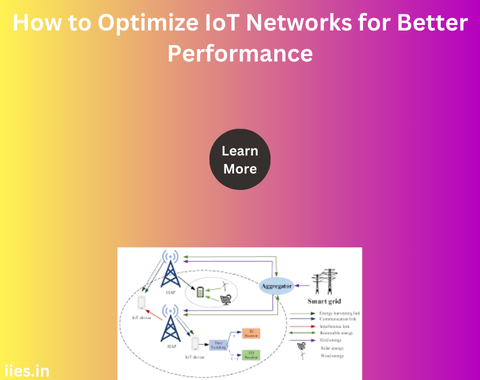
The Internet of Things (IoT) has revolutionized industries by enabling a vast array of devices to communicate and exchange data. However, as the number of connected devices continues to grow, so does the complexity of managing IoT networks. To ensure optimal performance, it’s essential to understand the key strategies and best practices for optimizing IoT networks.
The foundation of a well-optimized IoT network lies in its topology. Selecting the right network architecture—whether it’s a star, mesh, or hybrid topology—can significantly impact the network’s performance. For example, a mesh topology offers robustness and redundancy by allowing multiple paths for data transmission, which is crucial in environments where devices are spread out and may experience intermittent connectivity. Conversely, a star topology is simpler and may be more appropriate for networks with fewer devices or where centralization is key.
In an IoT network, not all data is created equal. Some data, such as critical alerts, requires real-time transmission, while other data, like periodic sensor readings, can tolerate some delay. Implementing Quality of Service (QoS) protocols allows network administrators to prioritize traffic, ensuring that time-sensitive data is transmitted with minimal latency. Additionally, managing bandwidth effectively by compressing data and reducing the frequency of non-essential communications can prevent network congestion and improve overall performance.
Many IoT devices operate on limited power sources, such as batteries, making energy efficiency a critical aspect of network performance. Optimizing power consumption through techniques like duty cycling, where devices alternate between active and sleep modes, can extend battery life and reduce the load on the network. Additionally, using energy-efficient communication protocols, such as Zigbee or LoRa, can further enhance the performance of IoT networks by reducing the energy required for data transmission.
Centralized cloud computing can lead to latency and bandwidth issues in IoT networks, especially when large volumes of data are transmitted for processing. Edge computing addresses these challenges by bringing data processing closer to the source. By processing data locally on the device or at the network edge, IoT networks can reduce latency, minimize bandwidth usage, and improve response times. This approach is particularly beneficial in applications requiring real-time analytics, such as autonomous vehicles or industrial automation.
Security is a paramount concern in IoT networks, where vulnerabilities can lead to unauthorized access, data breaches, or even physical harm. To optimize performance without compromising security, it’s essential to implement robust encryption protocols, secure communication channels, and regular software updates. Additionally, adopting a Zero Trust model, where each device and user must be authenticated before accessing the network, can prevent unauthorized access and enhance overall network security.
As IoT networks expand, scalability becomes a crucial factor in maintaining performance. To support a growing number of devices, networks must be designed with scalability in mind from the outset. This includes choosing communication protocols that can handle a high density of devices, implementing flexible and modular network architectures, and using cloud-based management platforms that can dynamically allocate resources as the network grows.
Optimizing an IoT network is not a one-time task but an ongoing process. Continuous monitoring of network performance through analytics tools allows for real-time detection of issues such as latency spikes, packet loss, or device failures. By leveraging predictive analytics and machine learning, network administrators can proactively identify potential problems and make informed decisions to optimize the network before issues impact performance.
IoT networks often consist of devices from multiple vendors, each using different protocols and standards. Ensuring interoperability between these devices is crucial for optimizing network performance. Adopting industry standards and protocols, such as MQTT or CoAP, can facilitate seamless communication between devices and reduce compatibility issues. Additionally, using standardized APIs can simplify integration and management, making it easier to scale and optimize the network.
Optimizing IoT networks for better performance requires a comprehensive approach that considers topology design, bandwidth management, energy efficiency, edge computing, security, scalability, continuous monitoring, and interoperability. By implementing these strategies and best practices, organizations can ensure that their IoT networks are not only efficient and reliable but also scalable and secure, enabling them to harness the full potential of IoT technology.
Indian Institute of Embedded Systems – IIES